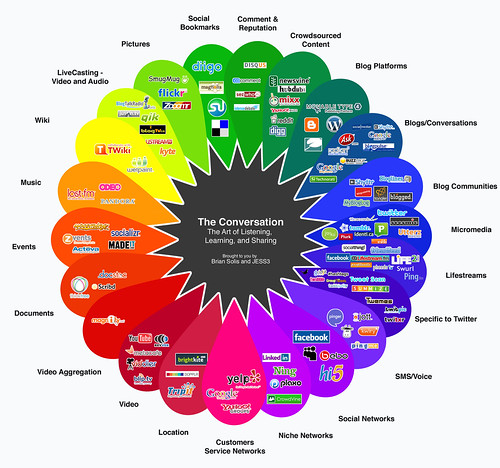When Jesse Thomas of JESS3 and I started to lay the foundation for the Conversation Prism, we realized that it was a much larger task then simply categorizing social networks and placing them within a visually-rich graphic or chart. My goal was to observe, analyze, dissect, and present the dynamics of conversations, how and where they transpired.
We immediately realized that V1 would be short-lived and the need for continual iteration in order to document the evolving conversation online would emerge inevitable. As we work diligently on V2, as well as developing a supporting, scalable ecosystem, friends all over the world are simultaneously documenting the language and architecture of global online conversations.
In advance of our impending announcement, I wanted to spotlight the valuable work of those around the world. The Conversation Prism is now available in French, Chinese, and Japanese, with each localized to visually demonstrate the unique channels of online discussions materializing respectively.
France

Introductory Post
Japan
Introductory Post 1
Introductory Post 2
China

Introductory Post
—
Related reading on PR 2.0:
– The Essential Guide to Social Media Translated into French
– Social Media Manifesto Translated into Russian
– The Socialization of Your Personal Brand
– The State of Social Media 2008
– The Social Revolution is Our Industrial Revolution
– The Essential Guide to Social Media
– The Social Media Manifesto
– Introducing The Conversation Prism
– Now is Gone (Available on Amazon)
—






Very nice.Any plans to have a “Conversation Prism” for India ?
Brian
Reading Mayank’s comment – why don’t you allow download of the template so that niche areas / geographies / industries can make up their own prisms using your IP?
I see the labels on each petal are different for each country. Why is this?
Rebecca Caroe